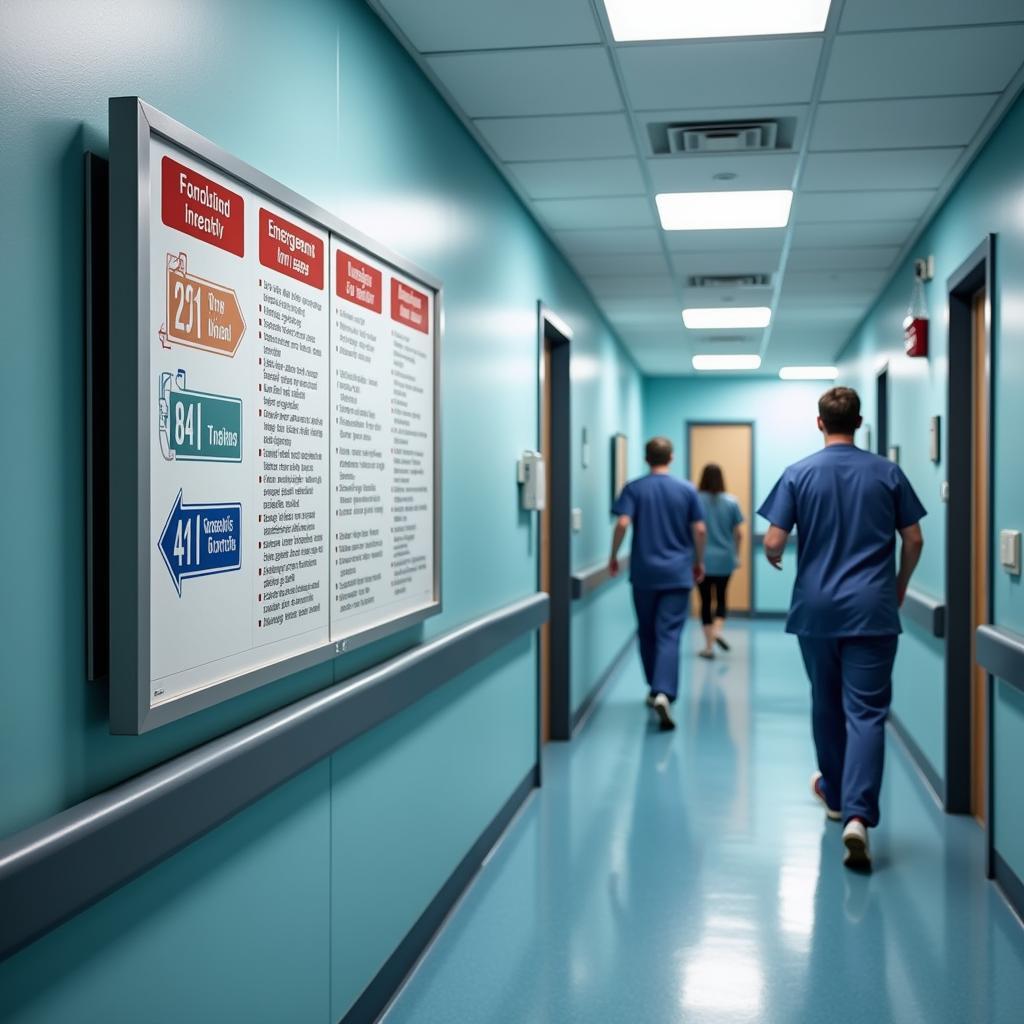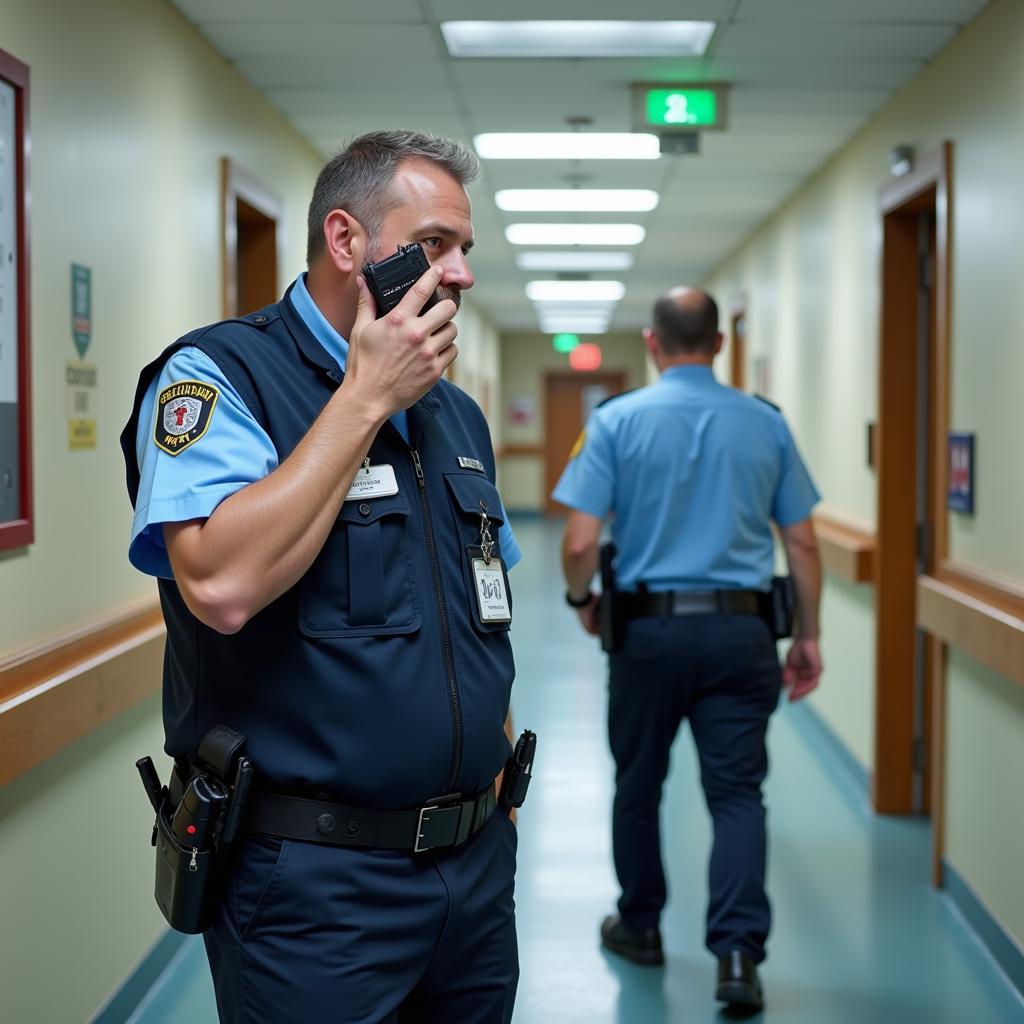“Code 10 at a hospital” – a phrase that can spark curiosity and even anxiety. While it might sound like something out of a medical drama, the reality is far less sensationalized. In most hospitals, a “code” system is used to quickly convey information about emergencies or urgent situations, and a “Code 10” generally refers to a specific type of incident. Let’s demystify the term and explore what a Code 10 typically signifies in a hospital setting.
Deciphering Hospital Codes: A System for Efficiency and Clarity
Hospitals are bustling environments where clear and concise communication is paramount. Imagine a scenario where a fire erupts in a hospital wing or a patient experiences a sudden cardiac arrest. In such critical moments, every second counts, and conveying the nature of the emergency quickly to the appropriate personnel is crucial. This is where hospital codes come into play.
Instead of broadcasting lengthy descriptions over the intercom, which could lead to confusion and delays, hospitals utilize a pre-defined set of codes. These codes, often consisting of a word or number, instantly communicate the type of emergency, its location, and the required response. This system ensures that medical professionals, staff, and even visitors can react swiftly and appropriately.
 Hospital Code Board
Hospital Code Board
Code 10: Variations and Common Meanings
While the use of hospital codes aims for standardization, the specific meaning of a Code 10 can vary slightly from one healthcare facility to another. It’s essential to remember that hospitals may have their unique internal code systems tailored to their specific needs and protocols.
That being said, a Code 10 often relates to security concerns or external threats. Here are some common interpretations of a Code 10:
- Bomb Threat: A Code 10 might be used to alert staff about a potential bomb threat within the hospital premises.
- Active Shooter: In the unfortunate event of an active shooter situation, a Code 10 could be activated to initiate lockdown procedures and ensure the safety of patients, staff, and visitors.
- Suspicious Person or Activity: If there’s a report of a suspicious individual or activity that could pose a security risk, a Code 10 might be declared.
- External Disaster: In some cases, a Code 10 might be used to signal an external disaster, such as a severe weather event or a major accident nearby, requiring the hospital to take precautions and prepare for potential influx of patients.
It’s important to note that not all Code 10s signify immediate danger. For instance, a report of a suspicious package might trigger a Code 10, leading to a controlled investigation without necessarily requiring a full-scale evacuation.
 Hospital Security Personnel
Hospital Security Personnel
What to Do During a Code 10: Prioritizing Safety and Following Instructions
Hospitals prioritize the well-being of everyone within their walls. If you ever find yourself amidst a Code 10 situation, it’s crucial to remain calm and follow the instructions provided by hospital staff or security personnel. Remember, they are trained to handle these situations effectively and guide you toward safety.
Here are some general guidelines to follow during a Code 10:
- Stay Informed: Pay close attention to announcements made over the hospital’s intercom system. If you’re unsure about the instructions, don’t hesitate to ask a staff member for clarification.
- Remain Calm: Panic can hinder effective response. Take deep breaths and try to remain calm. Your composure can help others around you, especially if you are with children or individuals who are anxious.
- Follow Instructions: Hospital staff will provide specific instructions based on the nature of the Code 10. It’s crucial to follow their guidance promptly and without hesitation. This might involve evacuating to a designated safe area, sheltering in place within a room, or taking other precautionary measures.
- Avoid Spreading Rumors: In the age of social media, misinformation can spread like wildfire. Refrain from spreading unverified information or rumors, as it can create unnecessary panic and hinder the efforts of first responders.
 Hospital Staff Guiding People
Hospital Staff Guiding People
Beyond Code 10: Understanding Other Hospital Codes
While this article focuses on Code 10, it’s beneficial to have a basic understanding of other commonly used hospital codes:
- Code Blue: Typically indicates a medical emergency such as cardiac or respiratory arrest.
- Code Red: Often signifies a fire or the presence of smoke within the hospital.
- Code Pink: Generally used to signal an infant or child abduction.
- Code Black: Might indicate a bomb threat or the discovery of a suspicious package.
Remember, these are just general interpretations, and the specific meaning of each code can vary depending on the hospital. If you’re curious about the code system used in a particular hospital, you can often find information on their website or by contacting their information desk.
Importance of Hospital Security and Emergency Preparedness
The use of codes like Code 10 highlights the critical importance of security and emergency preparedness in healthcare settings. Hospitals are responsible for the well-being of a large number of people, and having robust systems in place to address emergencies is not just good practice but a necessity.
Effective hospital security encompasses a wide range of measures, including:
- Trained Security Personnel: Hospitals often have dedicated security teams trained to respond to various security threats, from handling disruptive behavior to addressing more serious situations like a Code 10.
- Surveillance Systems: Modern hospitals utilize surveillance cameras to monitor activity within their facilities, deterring potential criminal activity, and providing valuable evidence in case of an incident.
- Access Control: Limiting access to certain areas of the hospital through key cards, badges, or security checkpoints helps prevent unauthorized entry and enhance overall security.
- Emergency Drills: Regularly conducting drills for various emergency scenarios, including Code 10 situations, ensures that staff is well-prepared to respond swiftly and efficiently when a real emergency arises.
San Jose Hospital: Your Trusted Partner in Healthcare
At San Jose Hospital, we prioritize the safety and well-being of our patients, staff, and visitors. We maintain a secure environment and have robust emergency protocols in place, including a comprehensive code system, to address any situation effectively. Our dedicated security personnel and well-trained staff are committed to ensuring your peace of mind while you are in our care.
If you have any concerns or questions regarding our security measures or emergency procedures, please don’t hesitate to reach out to our team. Your safety is our top priority.
Need assistance? Contact us:
Phone Number: 02437655121
Email: [email protected]
Address: Số 298 Đ. Cầu Diễn, Minh Khai, Bắc Từ Liêm, Hà Nội, Việt Nam
Our dedicated customer support team is available 24/7 to assist you.